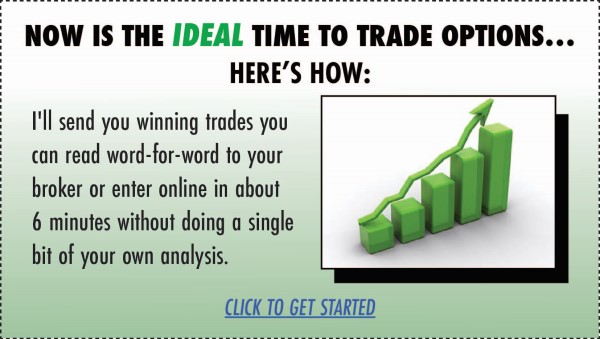by Jon Najarian
When you’re trading options as a retail investor, you can’t rely on pricing models alone. If you believe, for example, that the March 2000 call is undervalued and therefore a good buy, it’s not enough. As a retail investor, you’re looking at more than just the relative value of an option, hoping to turn a quick profit on a put or a call, buying an option at, say, $3 and selling it at $3.75. Retail investors must have a longer time horizon than floor traders. As I jokingly tell investors at my seminars, floor traders like me have about a 15-second attention span. It doesn’t matter what I’m doing, I can only focus for 15 seconds.
That usually gets a laugh out of people, but a floor trader (remember the emphasis is on TRADER, not INVESTOR) is competing against dozens of other traders to hedge each purchase or sale as quickly as possible. Why? Because the quickest traders will remember the resting orders in the brokers deck from 10 minutes to two hours ago and hit those orders as the market rallies or dives. Once the resting orders are gone, the last report is to hedge with the underlying security and when the stock specialist or Nasdaq market maker sees hundreds or thousands of shares of buyers or sellers hitting the market they run. Being 15 seconds late in my world is an eternity. The complete picture of the stock can change in half that time, so speed is of the essence.
Additionally, floor traders usually have a very rapid turnover. When a floor trader buys an option, we are not buying for investing purposes, we are taking on inventory and hopefully, capturing some of the bid-ask spread. That is the spread between my posted bid of say 4 ¼ and my posted offer of 4 ½. Due to the competition between upstairs traders and the other market makers in my pit, I can rarely capture that full ¼ point. Rather, traders seek to lock in 1/32 ($.03) or 1/16 ($.06) by hitting a resting option, or selling the underlying stock. Active market makers will make hundreds of trades per day, running in front of bulldozers to scoop up pennies. That’s why floor traders can “day trade” entering and exiting positions – ideally, hundreds of positions – within the same day. Paying retail commissions, retail investors are better off taking a longer time frame – anywhere from several days to a few months – for trading.

Conversely, floor traders could never use such a long-term time frame, largely because they are continually obligated to make a two-sided market, which means selling even when they’re bullish and buying even when they’re bearish.
Because of our rapid turnover of positions, options are not a zero sum game. You don’t have to lose for the market maker to win. You may buy a call option from me, and I may buy stock to hedge that sale. Let’s say that Micron goes up $5. You make money on your call and if I hedged properly, I made money on my stock purchase. As long as we continually hedge and monitor our risk, the market maker can provide a liquid market for the customer and a potentially lucrative market for himself.
A floor trader also has much tighter parameters on trades that turn out to be a little “early”. For example, you may believe an option priced at 3 ½ is undervalued and is worth closer to 4 or 5. But a floor trader, trading with a very short time horizon, will sell out and cut his loss the minute that option drops to 3 3/8 – even if it rises to 4 or 5 within a few days. A retail investor, on the other hand, will probably ride through the drop from 3 ½ to 3 3/8 or even 3, if that’s part of the strategy, on the belief that the option will appreciate in value before expiration.
Because of the short time frame for floor traders and for professional off-the-floor traders, fundamental analysis into a company’s operation is not as much a concern as theoretical analysis on the relative pricing of options. If someone on the floor is day trading, they could care less about what the company does. They’re not trading the fundamentals of a company’s bottom line or the strength of its industry. Instead, they’re trading volatility, taking advantage of price swings and trading momentum. Or they’re trading psychology when the market is panicked and oversold, in which case they’re looking for an opportunity to buy, or when it’s over-extended, and they’re looking to sell.
So if you’re set on day-trading as a retail investor, remember I am your competition. In this case, your decision to day-trade options is like playing a game of chance in Las Vegas; the odds are inevitably stacked against you. Let’s put it this way, I pay pennies per trade, have instantaneous access to the market (I just have to yell!), and don’t have to finance the same margins that a customer does. No matter how big a player you are, you’re still paying dollars, have to wait several seconds to several minutes to access the market, and have considerably higher cash demands. How can you possibly beat me on a per trade basis? Investing for a day, a week, or a month, sure, you can make money. If you use various spread strategies you can drastically reduce time-decay and volatility risk. But day-trading options against the floor is a loser’s bet.











Recent Comments